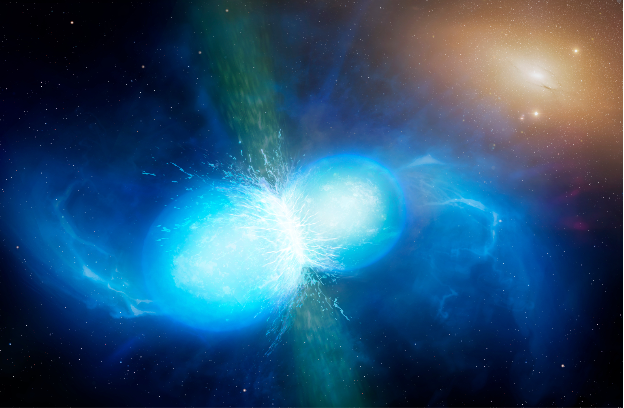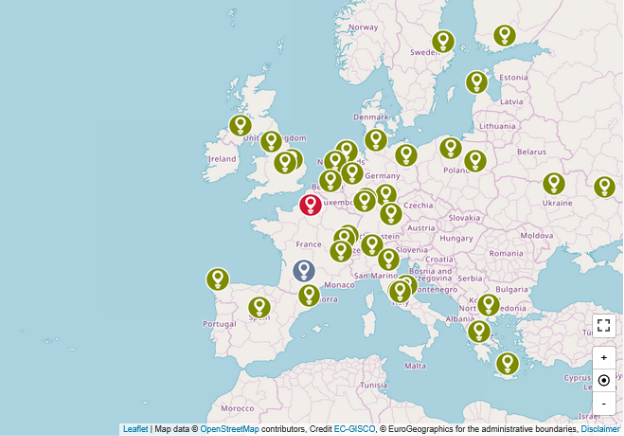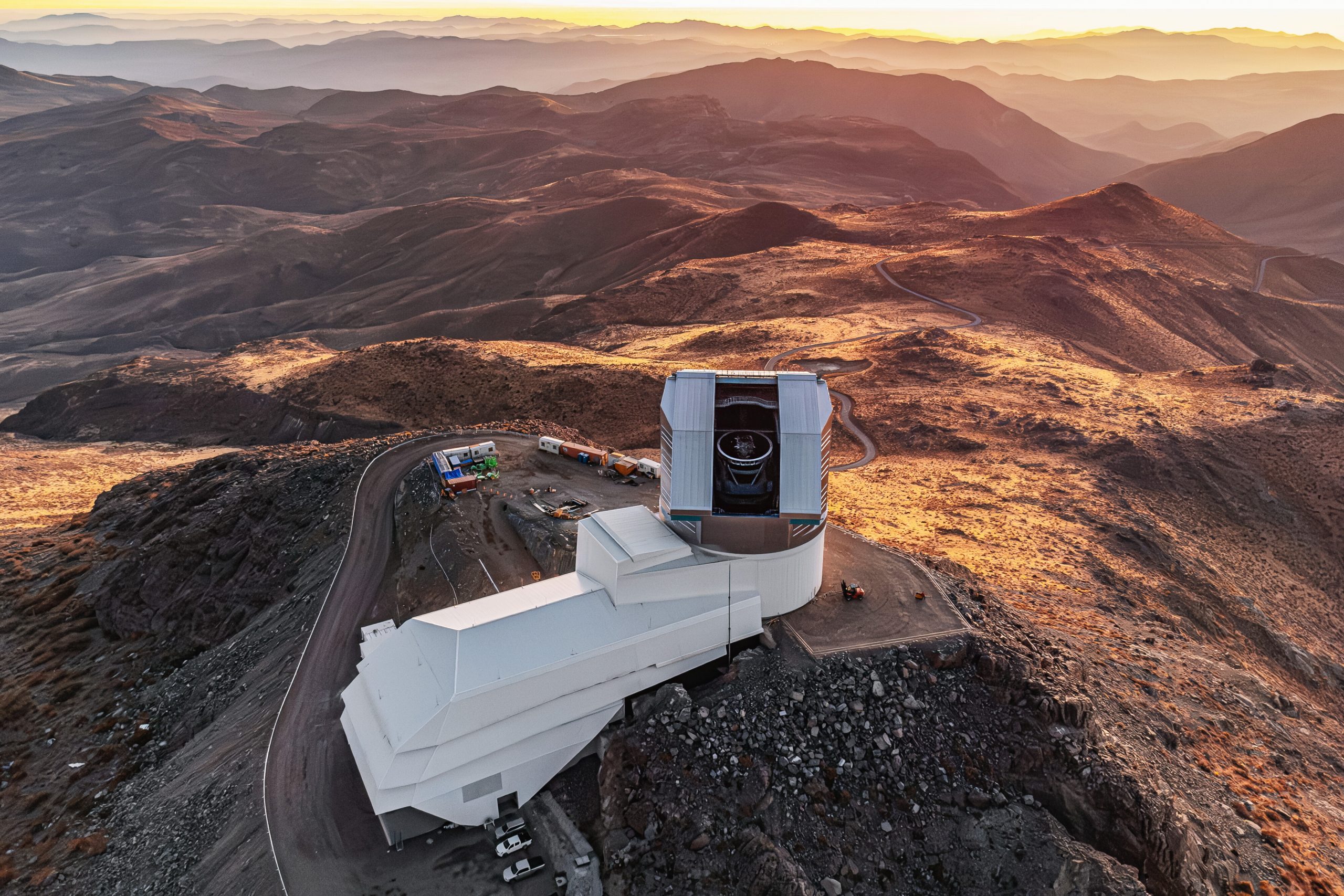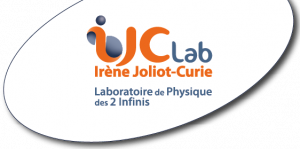
IJCLab is developing an interconnected ecosystem of projects that places the laboratory at the heart of European multi-messenger astronomy. From the EU-funded ACME project to the GRANDMA network, whose citizen science programme Kilonova-Catcher was crowned with the Gemini 2025 prize, these initiatives illustrate how international collaborations are transforming our understanding of cosmic phenomena.
Multi-messenger astronomy combines observations of different cosmic signals such as gravitational waves, gamma rays, neutrinos and visible light to understand the most violent astrophysical events in the Universe.
One of IJCLab's scientific objectives is to understand how heavy elements form in the Universe at the moment of their formation or when they interact, particularly during the merger of two neutron stars. These collisions eject extremely neutron-rich matter which, through rapid neutron capture (r-process), synthesises heavy elements such as gold, platinum or uranium. The radioactive heating of this matter generates a luminous emission called a kilonova, which shines for a few days to a few weeks, transitioning from blue to infrared red. On the cover, artist's impression of a kilonova by Mark Garlick/University of Warwick.
The historic detection of gravitational wave GW170817 in 2017 by LIGO and Virgo, accompanied by the observation of a kilonova, inaugurated the era of multi-messenger astronomy and demonstrated the potential of this approach.
ACME: 14.5 million euros to optimise access to European infrastructures
Launched in September 2024, ACME (Astrophysics Centre for Multi-messenger studies in Europe) brings together 40 partners from 15 European countries and the United States. This Horizon Europe project, coordinated by CNRS, spans four years with leading institutions such as DESY in Germany and CEA in France.

Map of European partners (not shown: Canada-France-Hawaii Telescope Corporation)
The project aims to harmonise transnational and virtual access to world-class infrastructures, while developing centres of expertise to facilitate access to a greater number of researchers and optimise future observation campaigns and analyses.
In France, several laboratories are actively participating in the project, reflecting the richness of the national astrophysics research ecosystem. IJCLab contributes through its Engineering and Astrophysics, astroparticles and cosmology divisions.
Julien Peloton, scientific manager, coordinates the laboratory's participation around three axes: FINK (astronomical alert broker), GRANDMA (international collaboration dedicated to multi-messenger astronomy) led by Patrice Hello, researcher in gravitational astronomy, and training activities led by Tiina Suomijärvi, lecturer-researcher.
The team continues to strengthen with the arrival of Camille Douzet, software development engineer, who ensures the opening of the ICARE/Skyportal scientific platform for alert management, storage and image analysis to all European users.
FINK: from 200,000 to 10 million alerts per night
FINK constitutes the digital brain of this observation chain. Developed by Julien Peloton's team, this astronomical alert broker processes in real time the 200,000 alerts generated each night by current sky surveys. The challenge is considerable: the Rubin Observatory will send approximately 10 million alerts per night for 10 years.

Drone view of the NSF–DOE Vera C. Rubin Observatory during the first observation campaign. © RubinObs/NOIRLab/SLAC/NSF/DOE/AURA
Faced with this deluge of data, FINK's artificial intelligence algorithms automatically filter and classify alerts to identify interesting events: supernovae, variable stars, near-Earth asteroids or optical signals from gravitational wave sources. This large-scale processing capability enables immediate triggering of follow-up observations necessary for multi-messenger astronomy.
GRANDMA: a collaboration for multi-messenger astronomy
The GRANDMA network (Global Rapid Advanced Network Devoted to the Multi-messenger Addicts), initiated by Sarah Antier, Patrice Hello and Nicolas Leroy in 2018 within IJCLab's "gravitational waves" group, comprises 35 telescopes distributed across 20 observatories on five continents. This global coverage enables rapid response to alerts of cataclysmic events.
The collaboration develops several programmes: gamma-ray bursts, neutrinos, LSST rapid transient follow-up and luminous emissions associated with gravitational waves. Composed of theorists, astrophysicists, physicists and observers, it has developed a collaborative environment to cross-correlate messengers: it is at the heart of this multiphysics analysis that science advances on the composition of relativistic jets, kilonovae or the formation of compact objects.
The results are numerous. For example, GRANDMA followed 90% of the alerts from LIGO/Virgo's O3 campaign and proposed its own interpretation of the observation of the most energetic burst detected by humans. The network now stands ready for the next kilonova.
Kilonova-Catcher : 200 award-winning amateur astronomers
GRANDMA has also developed Kilonova-Catcher, a citizen science project that mobilises amateur astronomers in the study of compact objects.
This programme has just received the Gemini 2025 prize, awarded to Damien Turpin (CEA Saclay), Sarah Antier (Observatoire de la Côte d'Azur and IJCLab), Arnaud Leroy (amateur astronomer), as well as to the network of 200 amateur astronomers distributed across five continents.

This recognition underlines the quality of the collaborative approach between professionals and amateurs. Sarah Antier, IJCLab member and co-laureate, illustrates the laboratory's ability to combine cutting-edge research with scientific democratisation. Amateur observations are integrated into scientific analyses on the same level as those from professional telescopes.
The European ecosystem serving research
ACME is part of the European strategy for structuring research in astronomy and astroparticle physics, targeting infrastructure services for the advancement of knowledge. At the laboratory, the project creates synergies between data processing (FINK), observation coordination (GRANDMA), training and opening to citizen science (Kilonova-Catcher).
These tools prepare the future of multi-messenger astronomy. With the improvement of gravitational wave detectors, the frequency of detections will considerably increase. Since GW170817 in 2017, the only confirmed kilonova, scientists and amateurs await the next detections that will enrich our understanding of these cosmic laboratories.
Learn more:
- ACME – Horizon Europe
- ACME website
- FINK broker
- GRANDMA network website
- KNC Catcher - Gemini Award 2025
- Vera C. Rubin Observatory unveils its first images: towards an astronomical revolution
- An updated nuclear-physics and multi-messenger astrophysics framework for binary neutron star mergers























